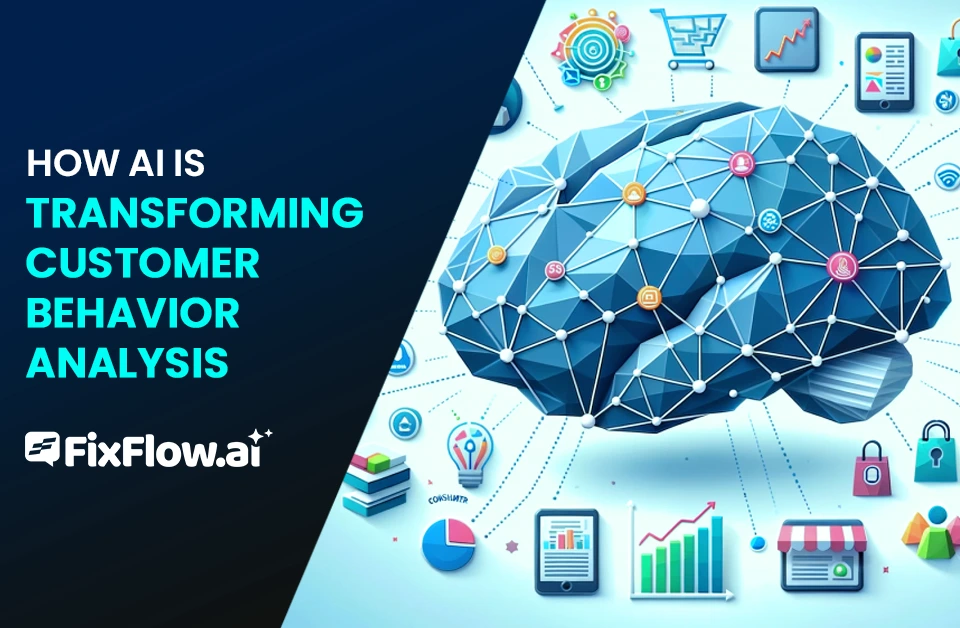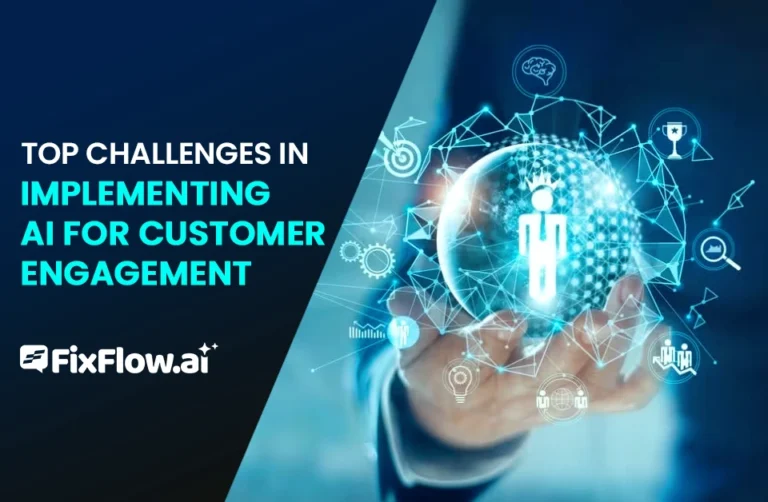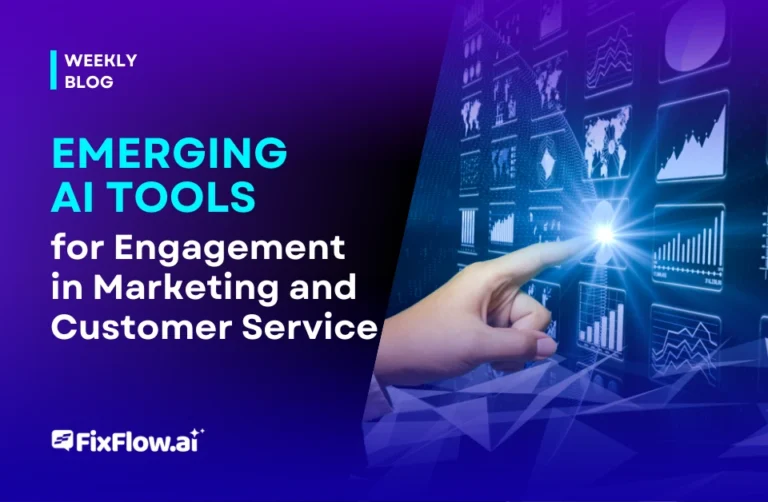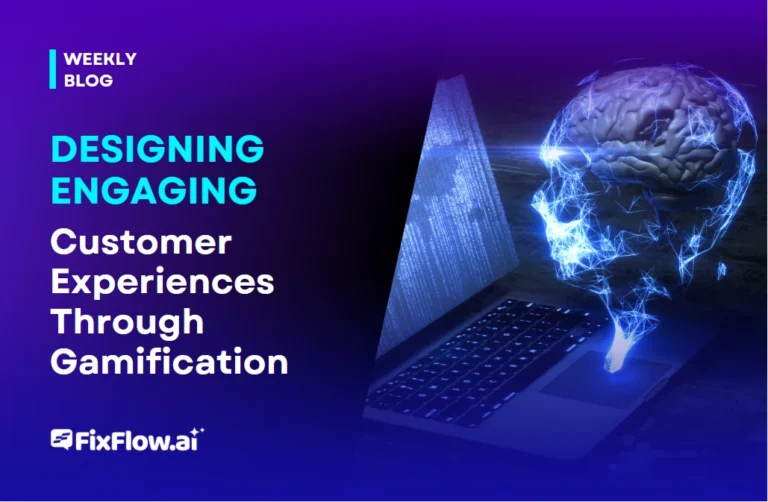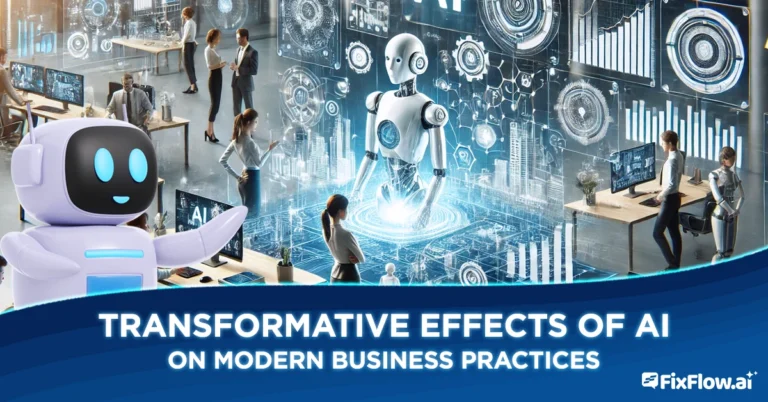How AI Is Transforming Customer Behavior Analysis
AI is revolutionizing how you analyze customer behavior. It can efficiently gather and process vast amounts of data, transforming it into actionable insights. Machine learning detects subtle shifts in customer behavior, enabling you to tailor offerings and communications to boost engagement. Predictive analytics helps you anticipate future purchasing trends, optimize inventory, and plan strategically. Personalization happens at scale, with AI crafting experiences that resonate personally with each customer. You can access real-time insights for quick decision-making, adapting marketing efforts on the fly. Finally, enhance customer engagement by addressing unique preferences. Discover how AI continuously evolves in this role.
AI-Driven Data Collection
Leveraging AI-driven data collection, you can efficiently gather and process vast amounts of customer information, enabling more informed decision-making. By utilizing AI-driven customer insights, you’re not just collecting data; you’re transforming it into actionable intelligence that can refine your business strategies. The power of AI lies in its ability to sift through enormous datasets, extracting meaningful patterns and trends that would be impossible for humans to identify quickly.
Machine learning in behavior analysis plays a crucial role here, as it helps you recognize subtle shifts in customer behaviors and preferences over time. This isn’t just about knowing what your customers did in the past; it’s about understanding why they made those choices. With these insights, you can tailor your offerings and communications to meet their needs better, enhancing data-driven customer engagement.
AI-driven tools provide real-time behavioral insights, allowing you to adjust your strategies on the fly. Instead of relying on static reports, you’re empowered with dynamic data that evolves as your customers do. This approach ensures that your engagement strategies remain relevant and effective, fostering deeper connections with your audience and driving sustained growth.
Predictive Analytics in Action
In the realm of customer behavior analysis, predictive analytics empowers you to anticipate future purchasing decisions and trends, transforming raw data into strategic foresight. With AI-driven purchasing behavior, you’re not just reacting to past trends but actively forecasting what’s next. By leveraging AI’s analytical capabilities, you can decipher complex patterns and understand how AI analyzes customer behavior, providing previously unattainable insights. This approach allows you to tailor marketing strategies that resonate more effectively with your target audience.
Predictive analytics for customers is all about making informed decisions. It takes into account a myriad of factors, from past purchases to browsing history, to forecast future actions. For instance, if you’re in retail, AI can predict which products are likely to surge in demand, enabling you to optimize inventory and enhance customer satisfaction. In e-commerce, it can suggest personalized deals and discounts, driving engagement and increasing conversion rates.
Ultimately, predictive analytics is transforming how businesses operate. By embracing these AI-driven insights, you can stay ahead of the curve, anticipate customer needs, and refine your strategies, leading to improved customer experiences and business growth.
Personalization at Scale
By harnessing the power of AI, you can deliver highly personalized experiences to each customer, transforming generic interactions into meaningful engagements. With customized marketing with AI, you’re not just broadcasting a one-size-fits-all message; instead, you’re crafting tailored experiences that resonate with individual preferences and needs. Imagine being able to recommend the perfect product at just the right moment or crafting a message that speaks directly to your customer’s unique interests. That’s the magic of AI and personalized customer experience.
To achieve this, AI tools for consumer insights become invaluable. They sift through massive amounts of data to uncover hidden patterns and preferences, allowing you to understand your customers on a deeper level. Whether it’s browsing history, purchase behavior, or even social media activity, AI can piece together a comprehensive profile that informs your marketing strategies.
This level of personalization would be nearly impossible to achieve manually. AI enables you to scale these efforts, ensuring that every customer interaction feels personal and thoughtful. The result? Increased customer satisfaction and loyalty, and ultimately, a stronger bottom line. By embracing AI-driven personalization, you’re not just keeping up with industry trends—you’re setting new standards for customer engagement.
Real-Time Behavioral Insights
Discover how AI delivers immediate insights into customer behavior, allowing you to make informed decisions swiftly and effectively. With real-time behavioral insights, you can track and understand customer actions as they happen. This capability transforms how you respond to market demands, making your strategies more agile and data-driven. By leveraging machine learning, AI identifies patterns in data that might be invisible to the human eye, enabling you to see beyond the surface and grasp the nuances of customer interactions.
The benefits of real-time behavioral insights are significant. First, they allow you to adapt marketing campaigns on the fly, ensuring your messages resonate with your audience’s current mood and preferences. Second, you can swiftly identify and address potential issues, enhancing customer satisfaction and retention. Real-time data empowers you to predict customer needs and adjust your offerings accordingly, keeping you one step ahead of the competition.
Moreover, machine learning continuously refines these insights, providing a deeper understanding of evolving trends. Integrating real-time insights into your business strategy enhances decision-making and optimizes resource allocation, ensuring your efforts are effective and efficient.
Enhancing Customer Engagement
Building on the power of real-time insights, AI empowers you to create more personalized and meaningful customer interactions that drive engagement. With AI-driven engagement, you can tailor your approach to meet each customer’s unique preferences and needs. This level of personalization goes beyond simply addressing customers by name; it involves understanding their behaviors and anticipating their needs before they even realize them. By leveraging AI, you can offer suggestions, content, and offers that resonate with your audience, ultimately fostering stronger connections and loyalty.
Virtual assistants are crucial in enhancing customer engagement. These AI-powered tools can handle inquiries, provide instant support, and even guide customers through complex processes while maintaining a conversational tone. By integrating virtual assistants into your customer service strategy, you ensure that customers receive immediate and accurate responses, significantly improving their experience with your brand.
Moreover, AI doesn’t just enhance current interactions; it continuously learns and adapts. This means that your engagement strategies will evolve alongside your customers’ changing behaviors and preferences. By harnessing AI, you’re not only engaging customers more effectively today but also setting the stage for future interactions that are even more impactful and relevant.
Frequently Asked Questions
How Does AI Ensure Customer Data Privacy and Security in Behavior Analysis?
You’re probably wondering how AI ensures customer data privacy and security during behavior analysis. Well, AI employs encryption techniques to safeguard your data, keeping it out of unauthorized hands. It also uses anonymization, ensuring that personal identifiers are stripped away. Furthermore, robust access controls are in place, allowing only authorized personnel to view sensitive information. By adhering to strict data governance policies, AI helps maintain your trust and secure your personal information.
What Are the Ethical Implications of Using AI in Customer Behavior Analysis?
When using AI in customer behavior analysis, you’ll face ethical concerns like data privacy, consent, and bias. It’s crucial to ensure that AI systems don’t misuse personal data or reinforce stereotypes. You also have to prioritize transparency, making sure customers know how their data is used. Balancing automation with human oversight helps maintain ethical standards, and keeping AI unbiased requires constant monitoring and adjustment to align with fair and ethical practices.
How Can Businesses Prevent Bias in AI-Driven Customer Segmentation?
To prevent bias in AI-driven customer segmentation, start by ensuring diverse and representative data collection. Then, regularly audit your AI models for bias and make adjustments as needed. Finally, implement transparency in your algorithms so they’re understandable and accountable. Finally, a diverse team should be encouraged to oversee the AI processes, as varied perspectives can identify and mitigate biases. Remember, continuous monitoring and feedback loops are crucial to maintaining fairness in segmentation.
What Are the Limitations of AI in Understanding Complex Human Emotions?
When you’re considering AI’s role in deciphering complex human emotions, remember that it’s not flawless. AI struggles with nuances and context that humans naturally understand. It can misinterpret sarcasm, irony, and cultural subtleties, leading to inaccurate emotional readings. Additionally, AI’s reliance on historical data may not reflect current emotional trends. You should be cautious of these limitations and ensure there’s a human touch when interpreting emotional insights for accuracy.
How Do Companies Balance AI Automation With Human Oversight in Customer Interactions?
When companies balance AI automation with human oversight in customer interactions, it’s crucial to blend efficiency with empathy. AI can handle repetitive tasks, but it can’t replace the human touch. By having staff oversee AI outputs, you ensure that customer interactions remain personal and adaptable. It’s all about finding that sweet spot where AI enhances service without sacrificing the human element that builds trust and loyalty.

